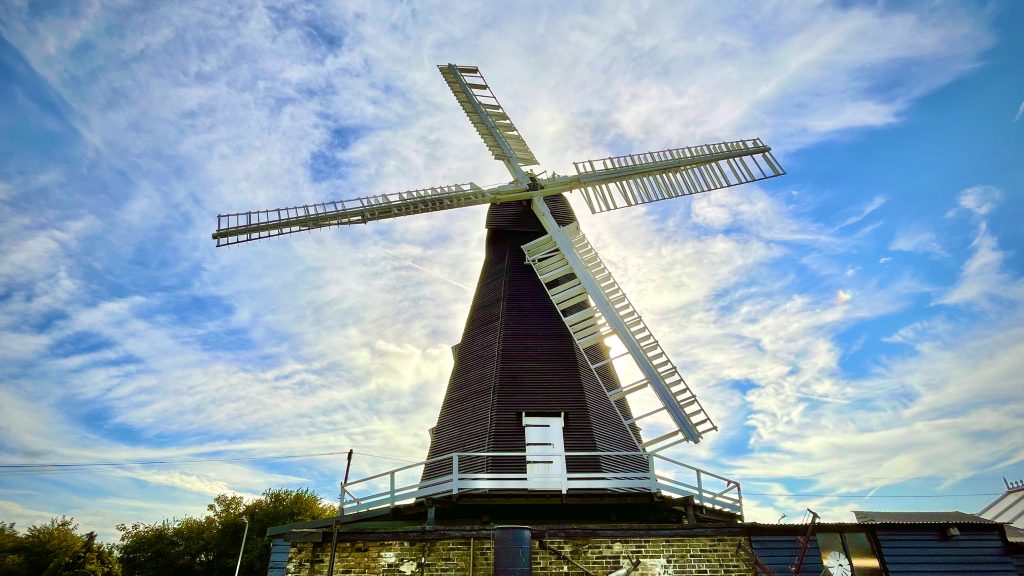
I’m sure that you don’t want me to bore you with lots of boring windmill details, so what I’ll do instead is just tell you about the interesting stuff, especially the stuff that surprised me. I hope you find these interesting, too.
- In almost all fictional depictions of windmills the sails go clockwise. In reality they go anti-clockwise! I don’t know the reason, but they do.
- In all pictures of windmills the sails are set in the cross angles of the St Andrew’s flag. Yes, this is true, when we park the sails we do set them that way. Except, that is, for special occasions. The recent death of the queen being one of those occasions, and then they were set in the mourning position as in the top picture.
- The sails are not called sails in Kent and Sussex. Here we call them sweeps, which is reasonable when you think that they’re not sails!
- A big surprise to me (and really it’s obvious when you think about it) is that the sweeps always point towards the wind, they’re not fixed in position. It’s all down to the fantail, the small ‘windmill’ on the back of the mill. Any side wind causes that to spin, in turn turning shafts and gears to make the whole top of the windmill (the cap) turn towards the wind. Should the wind ever come from behind the sweeps then it’s a very dangerous situation and the mill could blow over if the wind is strong enough. It has happened to other mills…
- As you know, the wind is a very variable thing, it can be low speed, blustery, high speed or anything in between. To cope with that variability the sweeps have slats that can be adjusted by the miller to be open or closed or anything in between, just by pulling a chain, plus there’s a built-in auto-open in case of sudden strong gusts. The sweep design is called ‘patent sails’ and they control the power available to the mill.
- Although the mill has been restored from a dilapidated condition a lot of the more original wood is still there. But when I say ‘more original’ it must be remembered that’s the mill will have undergone many repairs and replacements in its working life. A bit like Trigger’s broom!
- Although the mill was built in the late period of the Industrial Revolution it is not made of all metal construction internally as may have been expected. It’s interesting to note that a lot of the gears are made of wood, but that’s not just an economy measure. The big pluses of using wood are low noise and repair-ability, but the main reason is that flour dust is explosive! Metal on metal can make sparks – definitely not welcome in a flour mill!
- The mill stones grind the wheat grains to flour, right? Wrong! They’re far more sophisticated than that. The first thing is that the mill stones don’t touch – there’s a gap of about 20 thousandths of an inch (0.5 mm), and what it does is slice the grains open, the flour spills out and the ‘shell’ stays more intact. In this way the flour and ‘shell’ can be separated later by sifting, the shell is the bran.
- The gap I mentioned above has to be adjusted to suit the speed of the stones because the rate of grain milling isn’t linear with speed. And that’s done automatically! By the use of centrifugal belt-driven governors and levers! All very clever for an old machine.
There are loads more interesting things to see in Drapers Windmill, so why not plan a visit sometime soon? You can either call 07985147563 and arrange a visit, or, if you’re local, just try dropping in on a Wednesday or Sunday afternoon when there’s usually some volunteers around.
Next page will be linked here after I’ve written it..
